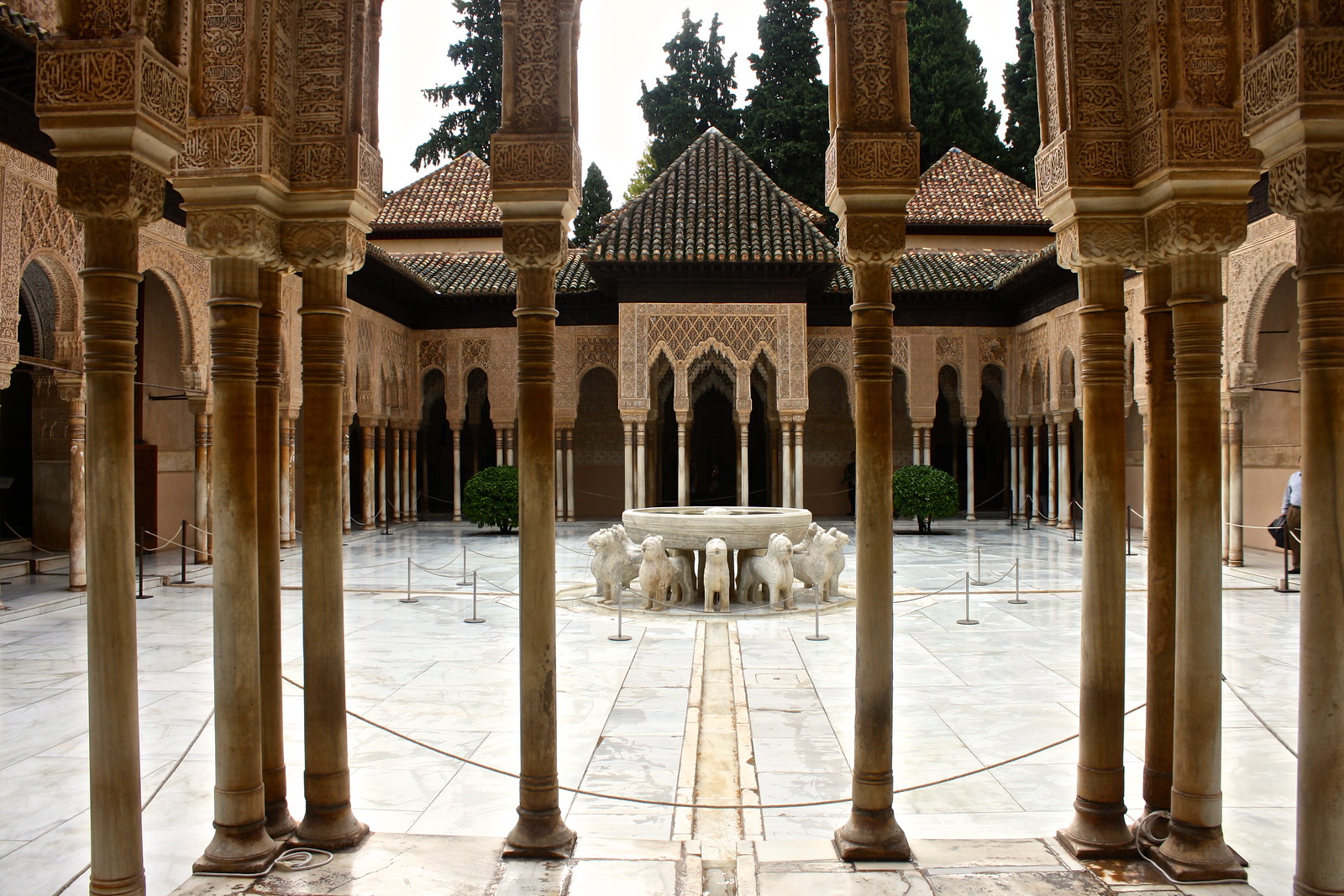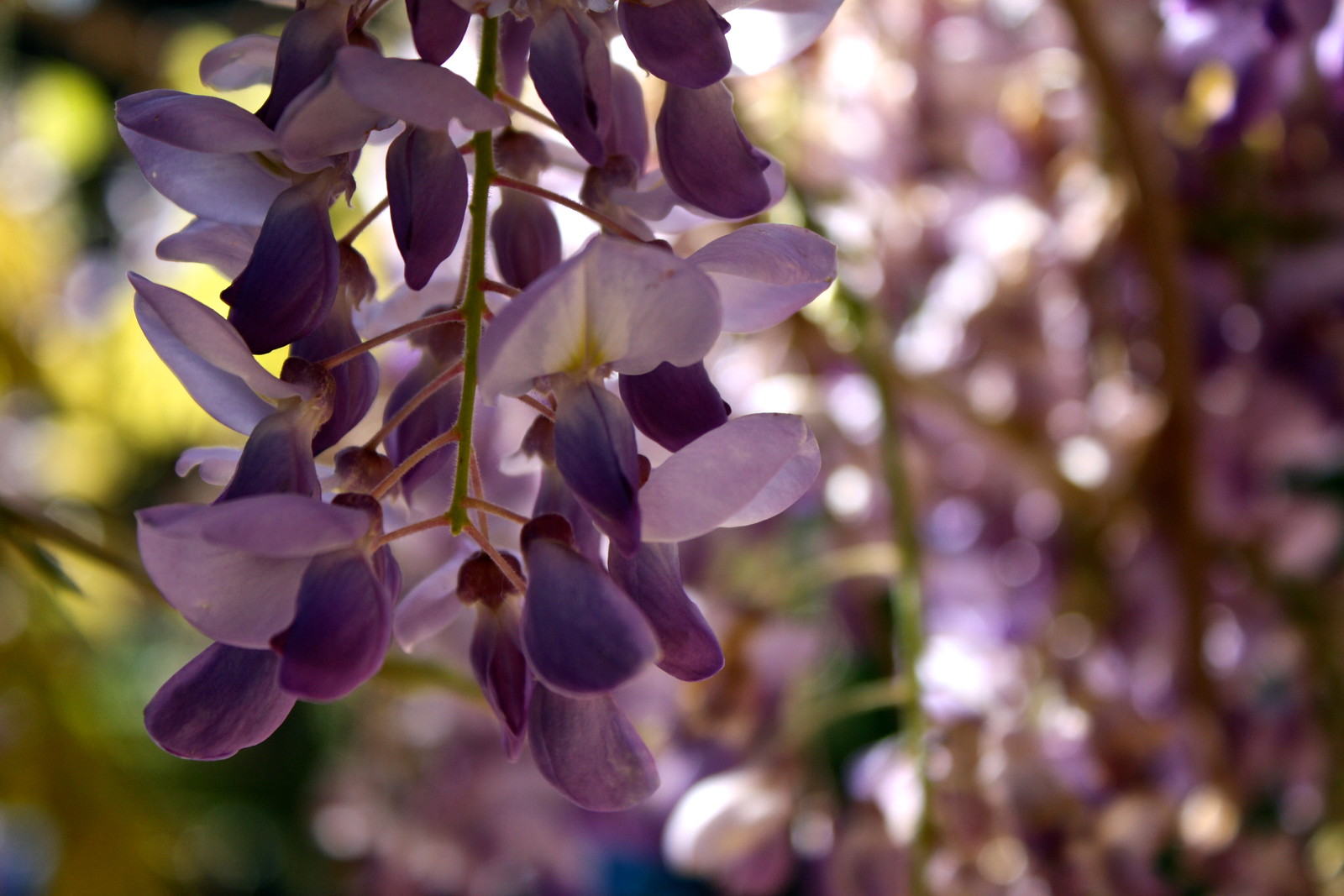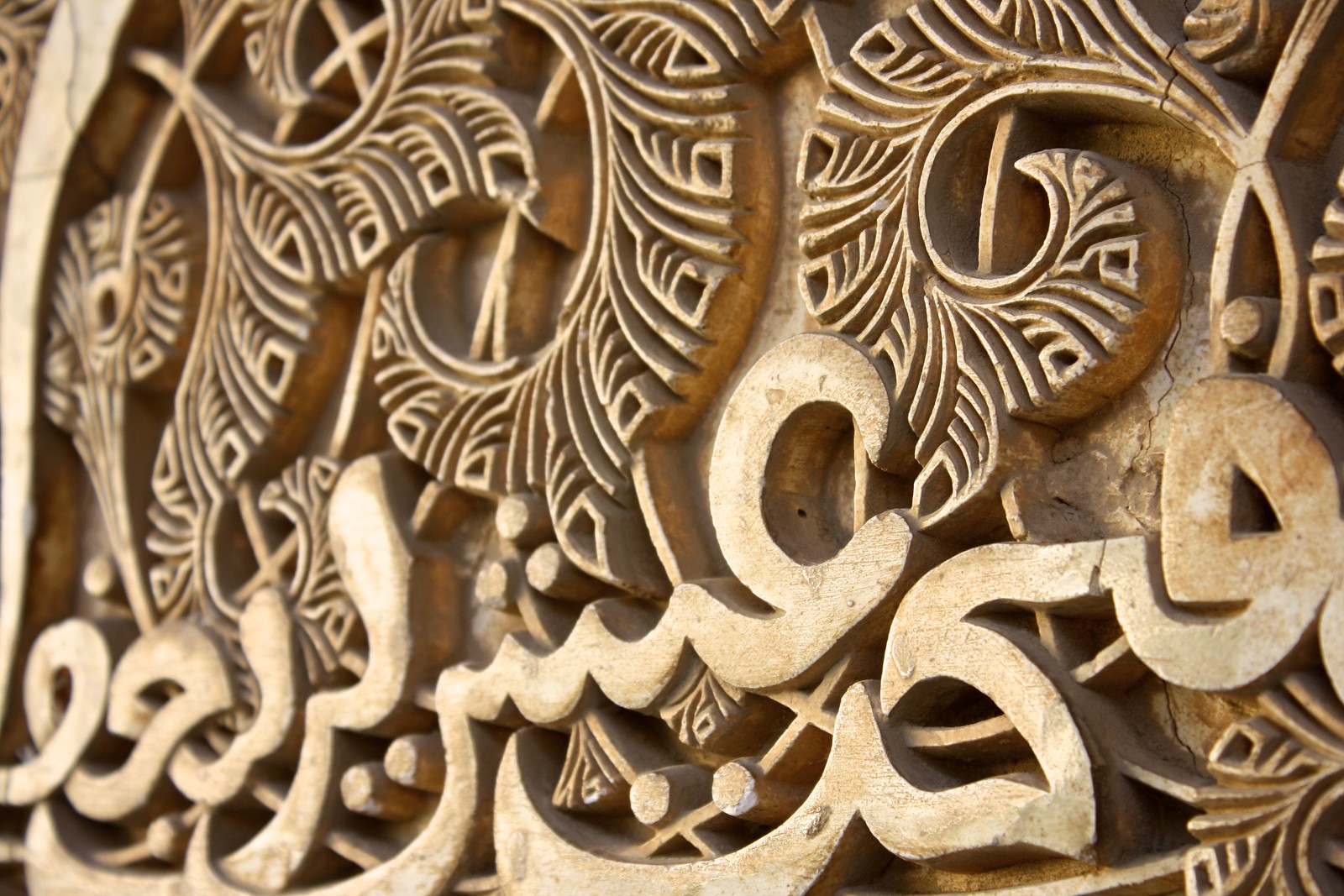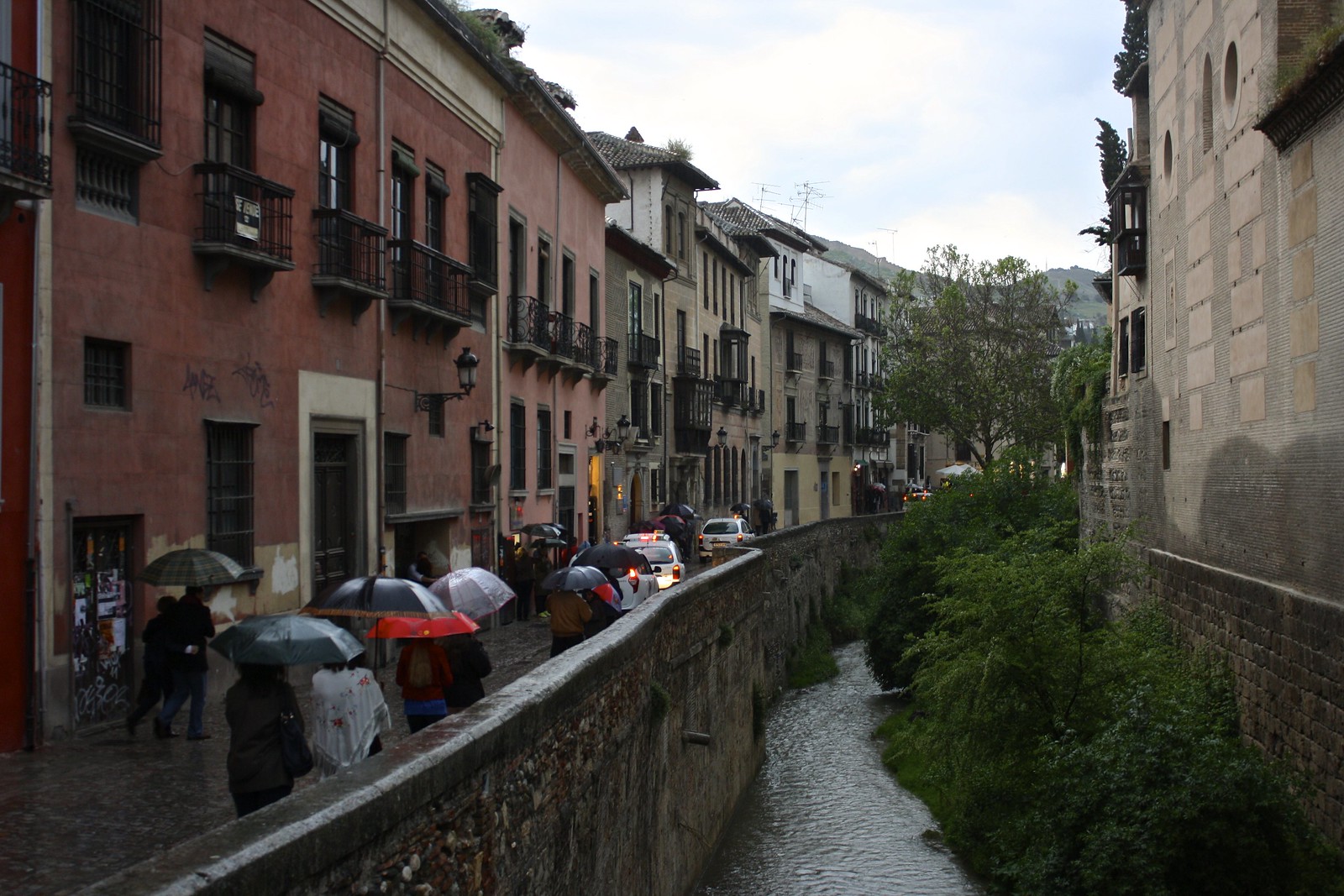Is It Blasphemy to Dislike Granada, Spain?
(Disclaimer: I’m fully aware I’m about to step on approximately 11,920 toes with this post…)
Don’t get me wrong, the first time I visited Granada back in November of last year, I loved it. I had been looking forward to wandering around the city’s Alhambra palace for years, and now it was merely two hours south of my adopted-home-for-eight-months, Úbeda! Going with two new American friends in town, we saw the sights, got soaked in the rain, woke up at an ungodly hour to wait in line for Alhambra tickets, drank Moroccan tea, and strolled down Gran Vía at night together. (We also discovered the wonder that is the tortilla sandwich, but that’s a story for another post.) It was a really great trip and, at the time, I looked forward to returning again soon.
And so I went back for a second visit. A short jaunt down to Málaga the first weekend in May left me with a long layover in Granada on my way back home. I took advantage of this opportunity to see the Alhambra again, this time in spring. It was still just as stunning the second time around, and I felt like I was seeing it with new eyes: the seasons had changed and I myself was now a seasoned traveler across Andalucía and Morocco. Flowers were everywhere. Purple, perfumed wisteria hung from every post and beam, roses enlivened the Generalife gardens, and the intoxicating aroma of azahar, the orange blossom, drifted from orange trees within and without the palace grounds.
Although I relished the chance to experience the Alhambra in the sweet-smelling spring, I think the city soured on me when I went back. Granted, I did happen to visit during the Cruces de Mayo festival in which the various cofradías and hermandades—Catholic brotherhoods known for carrying around religious floats during Holy Week—construct massive crosses of flower planters and set up open-air bar-restaurants. Let me tell you: the city was insane. People (rather loud and slightly-buzzed granadinos, mostly) crammed the streets from just after siesta until who knows when the next morning.
The charming atmosphere I enjoyed when I first visited was gone. Perhaps it was because stupid, slow-walking tourists had packed the Albaicín, because I had experienced what a Muslim/North African country is actually like, or because free tapas were no longer restricted to just Granada but also served in much of the rest of the country. I soon concluded that apart from the Alhambra, Granada as a city just wasn’t worth the time of day for me.
By writing this post I feel like the Travel Blogger Inquisition is going to haul me out into the Plaza Mayor de Twitter and force me to recant my heretical views about the city…or else burn me at the proverbial stake. Maybe I took that metaphor too far, but I’ve gotten the impression from both the travel blogosphere and countless books that Granada is universally regarded as a beautiful, magical city overflowing with Moorish heritage—in short, a Don’t-Miss-This place you have to stop in for days to really appreciate. You can hate on Madrid or Barcelona all day long and people will respect (and counter!) your opinion, but Granada is almost sacrosanct. Granada seems to be above criticism; after all, how could you dislike the home of the Alhambra?
After all, I am a huge fan of the Alhambra. Show me some Moorish- or Mudéjar-style art anywhere in Spain—be it plasterwork, tilework, or woodwork—and I’ll go gaga; give me a ticket to see the Alhambra and I’ll love you forever. It’s pretty much the greatest example of Islamic art anywhere in the world, and it’s been amazingly preserved despite anti-Moorish sentiment after the Reconquista. The Alhambra is awesome, and I will argue with anyone who claims it shouldn’t be the Number One Tourist Destination in Spain™.
But I simply can’t stand the rest of the city, mainly for its supposed “Moorish” feel.
If we’re being honest, I think it’s pretty clear that any lingering Moorish heritage Granada had was wiped away within a century or two of the city’s conquest in 1492 by the Catholic Monarchs, Ferdinand and Isabella. The last city that remained of the Nasrid Kingdom that once stretched from Málaga to Almería, Granada marked the end of the seven-centuries-long Reconquista campaign by Christian Castilians to win “back” Spain from the Muslims. Granada’s capture symbolically represented the triumph of Christianity over Islam to medieval Spaniards.
Although the three cultures of Muslims, Jews, and Christians coexisted after the conquest, this uneasy peace didn’t last long. The Alhambra Decree, issued a few months later, forced all Jews in Spain to convert to Christianity…or get out, and most chose the latter option. And although Muslims were allowed to remain in newly conquered lands, increasing pressure to convert to Christianity led them to revolt in the nearby Alpujarras region in 1500. The state stamped out this rebellion and subsequently ordered all Muslims to convert or leave the country. Those who stayed and converted became known as Moriscos, but were still persecuted as “false” converts. Ultimately, by 1609 all Moriscos—whether legitimate Christians or not—were ordered to leave the country.
During this tumultuous century, the city of Granada was effectively purged of its Moorish heritage. The lively (and touristy) Plaza Bib-Rambla was once the site of Inquisition trials and burnings, and Cardinal Cisneros ordered the burning of all Arabic-language books—be they Qur’ans or scientific treatises—in the Plaza Nueva at the entrance to the Albaicín neighborhood.
In said neighborhood, the home of many Jews and Muslims, the Church of Santa María la Mayor was built on top of the city’s main mosque, although the ablutions courtyard was spared. Around this same time the “Lead Books of Sacromonte” were found (read: forged) in the northeast of the city, books written in Arabic that gave a revisionist history of the city to persuade Muslims to convert to Christianity. The remains and relics of patron saint Caecilius—an evangelist to nearby Roman Elvira—were also happened upon, and these two “discoveries” were used to craft a new Christian identity for the city.
Still, despite the town’s tragic history, if you stroll through the Albaicín neighborhood across from the Alhambra, it may very well feel like you’ve been transported to a North African medina. Moroccan-style teterías (teahouses) entice you with sugary mint tea and fluffy couscous, while streetside shops and stalls sell silver teapots, leather slippers, and wool rugs.
But don’t think that any of this is native to Granada—it’s all been imported from Morocco over recent decades to capitalize on tourism. There was never a tradition of tea in Granada because Moroccan/Touareg-style mint tea was introduced to North Africa only a century or two ago, only coming to southern Spain once people started to travel here for the heritage of Moorish architecture it conserves. The handful of streets in which vendors hawk their (marked-up) cliché goods are a far cry from the labyrinthine, chaotic medinas in Morocco where you can find literally anything (although you’ll probably get lost in the process!). Dishes like couscous and tajine aren’t typical Granadan cooking, although couscous in Sicily is, in fact, a result of medieval Moorish influence.
Walking through the Albaicín at night is a fun experience: you get to stroll down market streets, pop in to a teahouse for irresistible mint tea, and eat a tapa or two before meandering through shadowy alleyways and moody plazas. But I’ve always thought it has the same feel that Disney World does: enchanting and exciting…but at the same time, a fabrication.
I think people freak out over the free tapas that they receive with their drink in Granada because elsewhere in the other three major touristy cities of Spain—Barcelona, Madrid, and Sevilla—it isn’t customary to serve tapas gratis; instead, you have to pay extra and order a tapa, montadito, pincho, etc. When they come to Granada, it’s like a whole ’nother world, but in reality, it’s nothing out of the ordinary for much of the rest of the country.
In all of eastern Andalucía—provinces like Jaén and Almería—they give you free tapas with your beverage, as well as in much of Castilla-La Mancha, Extremadura, Galicia, and Castilla y León. Yes, Granada may have a strong tradition of big, creative tapas, but it doesn’t make the city any more special than most other Spanish regions.
What do you think? Do you agree that the city’s Moorish atmosphere feels fake or contrived? What is actually worth seeing and doing (and eating!) in Granada aside from the Alhambra? Join the discussion below…it’s gonna be a doozy haha

 |
| Patio de los Leones, the Alhambra |
Granada is…
- one of the biggest cities in the southern Spanish region of Andalucía
- home to the Alhambra, a beautiful Moorish palatial complex built in the Middle Ages during the last Muslim kingdom in Spain
- a center for generously large free tapas with your drink
- the burial place for the monarchs Ferdinand and Isabella
- a home base for going skiing in the snowy Sierra Nevada
- a great place to study abroad in
- the last city in Spain to be “re-conquered” from Muslim rule in the 1400s
- full of interesting neighborhoods like the winding, hillside Albaicín
- a popular place for the springtime Cruces de Mayo festival
- an essential stop for almost any trip to Spain
Granada is nice and all, but…
 |
| Tilework in the Alhambra |
Don’t get me wrong, the first time I visited Granada back in November of last year, I loved it. I had been looking forward to wandering around the city’s Alhambra palace for years, and now it was merely two hours south of my adopted-home-for-eight-months, Úbeda! Going with two new American friends in town, we saw the sights, got soaked in the rain, woke up at an ungodly hour to wait in line for Alhambra tickets, drank Moroccan tea, and strolled down Gran Vía at night together. (We also discovered the wonder that is the tortilla sandwich, but that’s a story for another post.) It was a really great trip and, at the time, I looked forward to returning again soon.
And so I went back for a second visit. A short jaunt down to Málaga the first weekend in May left me with a long layover in Granada on my way back home. I took advantage of this opportunity to see the Alhambra again, this time in spring. It was still just as stunning the second time around, and I felt like I was seeing it with new eyes: the seasons had changed and I myself was now a seasoned traveler across Andalucía and Morocco. Flowers were everywhere. Purple, perfumed wisteria hung from every post and beam, roses enlivened the Generalife gardens, and the intoxicating aroma of azahar, the orange blossom, drifted from orange trees within and without the palace grounds.
 |
| Wisteria in the Generalife gardens |
Although I relished the chance to experience the Alhambra in the sweet-smelling spring, I think the city soured on me when I went back. Granted, I did happen to visit during the Cruces de Mayo festival in which the various cofradías and hermandades—Catholic brotherhoods known for carrying around religious floats during Holy Week—construct massive crosses of flower planters and set up open-air bar-restaurants. Let me tell you: the city was insane. People (rather loud and slightly-buzzed granadinos, mostly) crammed the streets from just after siesta until who knows when the next morning.
The charming atmosphere I enjoyed when I first visited was gone. Perhaps it was because stupid, slow-walking tourists had packed the Albaicín, because I had experienced what a Muslim/North African country is actually like, or because free tapas were no longer restricted to just Granada but also served in much of the rest of the country. I soon concluded that apart from the Alhambra, Granada as a city just wasn’t worth the time of day for me.
Blasphemy!
 |
| Plasterwork in the Alhambra |
By writing this post I feel like the Travel Blogger Inquisition is going to haul me out into the Plaza Mayor de Twitter and force me to recant my heretical views about the city…or else burn me at the proverbial stake. Maybe I took that metaphor too far, but I’ve gotten the impression from both the travel blogosphere and countless books that Granada is universally regarded as a beautiful, magical city overflowing with Moorish heritage—in short, a Don’t-Miss-This place you have to stop in for days to really appreciate. You can hate on Madrid or Barcelona all day long and people will respect (and counter!) your opinion, but Granada is almost sacrosanct. Granada seems to be above criticism; after all, how could you dislike the home of the Alhambra?
After all, I am a huge fan of the Alhambra. Show me some Moorish- or Mudéjar-style art anywhere in Spain—be it plasterwork, tilework, or woodwork—and I’ll go gaga; give me a ticket to see the Alhambra and I’ll love you forever. It’s pretty much the greatest example of Islamic art anywhere in the world, and it’s been amazingly preserved despite anti-Moorish sentiment after the Reconquista. The Alhambra is awesome, and I will argue with anyone who claims it shouldn’t be the Number One Tourist Destination in Spain™.
But I simply can’t stand the rest of the city, mainly for its supposed “Moorish” feel.
The town’s post-medieval history is anti-Moorish
 |
| Generalife |
If we’re being honest, I think it’s pretty clear that any lingering Moorish heritage Granada had was wiped away within a century or two of the city’s conquest in 1492 by the Catholic Monarchs, Ferdinand and Isabella. The last city that remained of the Nasrid Kingdom that once stretched from Málaga to Almería, Granada marked the end of the seven-centuries-long Reconquista campaign by Christian Castilians to win “back” Spain from the Muslims. Granada’s capture symbolically represented the triumph of Christianity over Islam to medieval Spaniards.
Although the three cultures of Muslims, Jews, and Christians coexisted after the conquest, this uneasy peace didn’t last long. The Alhambra Decree, issued a few months later, forced all Jews in Spain to convert to Christianity…or get out, and most chose the latter option. And although Muslims were allowed to remain in newly conquered lands, increasing pressure to convert to Christianity led them to revolt in the nearby Alpujarras region in 1500. The state stamped out this rebellion and subsequently ordered all Muslims to convert or leave the country. Those who stayed and converted became known as Moriscos, but were still persecuted as “false” converts. Ultimately, by 1609 all Moriscos—whether legitimate Christians or not—were ordered to leave the country.
 |
| Pomegranate (“granada”) car-stopper-thingies in town |
During this tumultuous century, the city of Granada was effectively purged of its Moorish heritage. The lively (and touristy) Plaza Bib-Rambla was once the site of Inquisition trials and burnings, and Cardinal Cisneros ordered the burning of all Arabic-language books—be they Qur’ans or scientific treatises—in the Plaza Nueva at the entrance to the Albaicín neighborhood.
In said neighborhood, the home of many Jews and Muslims, the Church of Santa María la Mayor was built on top of the city’s main mosque, although the ablutions courtyard was spared. Around this same time the “Lead Books of Sacromonte” were found (read: forged) in the northeast of the city, books written in Arabic that gave a revisionist history of the city to persuade Muslims to convert to Christianity. The remains and relics of patron saint Caecilius—an evangelist to nearby Roman Elvira—were also happened upon, and these two “discoveries” were used to craft a new Christian identity for the city.
The Albaicín’s “Moorish-ness” is fabricated
 |
| The Albaicín neighborhood |
Still, despite the town’s tragic history, if you stroll through the Albaicín neighborhood across from the Alhambra, it may very well feel like you’ve been transported to a North African medina. Moroccan-style teterías (teahouses) entice you with sugary mint tea and fluffy couscous, while streetside shops and stalls sell silver teapots, leather slippers, and wool rugs.
But don’t think that any of this is native to Granada—it’s all been imported from Morocco over recent decades to capitalize on tourism. There was never a tradition of tea in Granada because Moroccan/Touareg-style mint tea was introduced to North Africa only a century or two ago, only coming to southern Spain once people started to travel here for the heritage of Moorish architecture it conserves. The handful of streets in which vendors hawk their (marked-up) cliché goods are a far cry from the labyrinthine, chaotic medinas in Morocco where you can find literally anything (although you’ll probably get lost in the process!). Dishes like couscous and tajine aren’t typical Granadan cooking, although couscous in Sicily is, in fact, a result of medieval Moorish influence.
Walking through the Albaicín at night is a fun experience: you get to stroll down market streets, pop in to a teahouse for irresistible mint tea, and eat a tapa or two before meandering through shadowy alleyways and moody plazas. But I’ve always thought it has the same feel that Disney World does: enchanting and exciting…but at the same time, a fabrication.
Free tapas, big deal
 |
| Darro River |
I think people freak out over the free tapas that they receive with their drink in Granada because elsewhere in the other three major touristy cities of Spain—Barcelona, Madrid, and Sevilla—it isn’t customary to serve tapas gratis; instead, you have to pay extra and order a tapa, montadito, pincho, etc. When they come to Granada, it’s like a whole ’nother world, but in reality, it’s nothing out of the ordinary for much of the rest of the country.
In all of eastern Andalucía—provinces like Jaén and Almería—they give you free tapas with your beverage, as well as in much of Castilla-La Mancha, Extremadura, Galicia, and Castilla y León. Yes, Granada may have a strong tradition of big, creative tapas, but it doesn’t make the city any more special than most other Spanish regions.
In conclusion
I feel afraid to voice how I actually feel about this beloved city at the risk of bringing down fire and brimstone from everyone else who thinks otherwise, even though I do love the Alhambra and Islamic art and architecture in general. The city just doesn’t do it for me, and I would much rather spend time in Córdoba, Sevilla, or the thousands of beautiful pueblos across the region of Andalucía.What do you think? Do you agree that the city’s Moorish atmosphere feels fake or contrived? What is actually worth seeing and doing (and eating!) in Granada aside from the Alhambra? Join the discussion below…it’s gonna be a doozy haha
